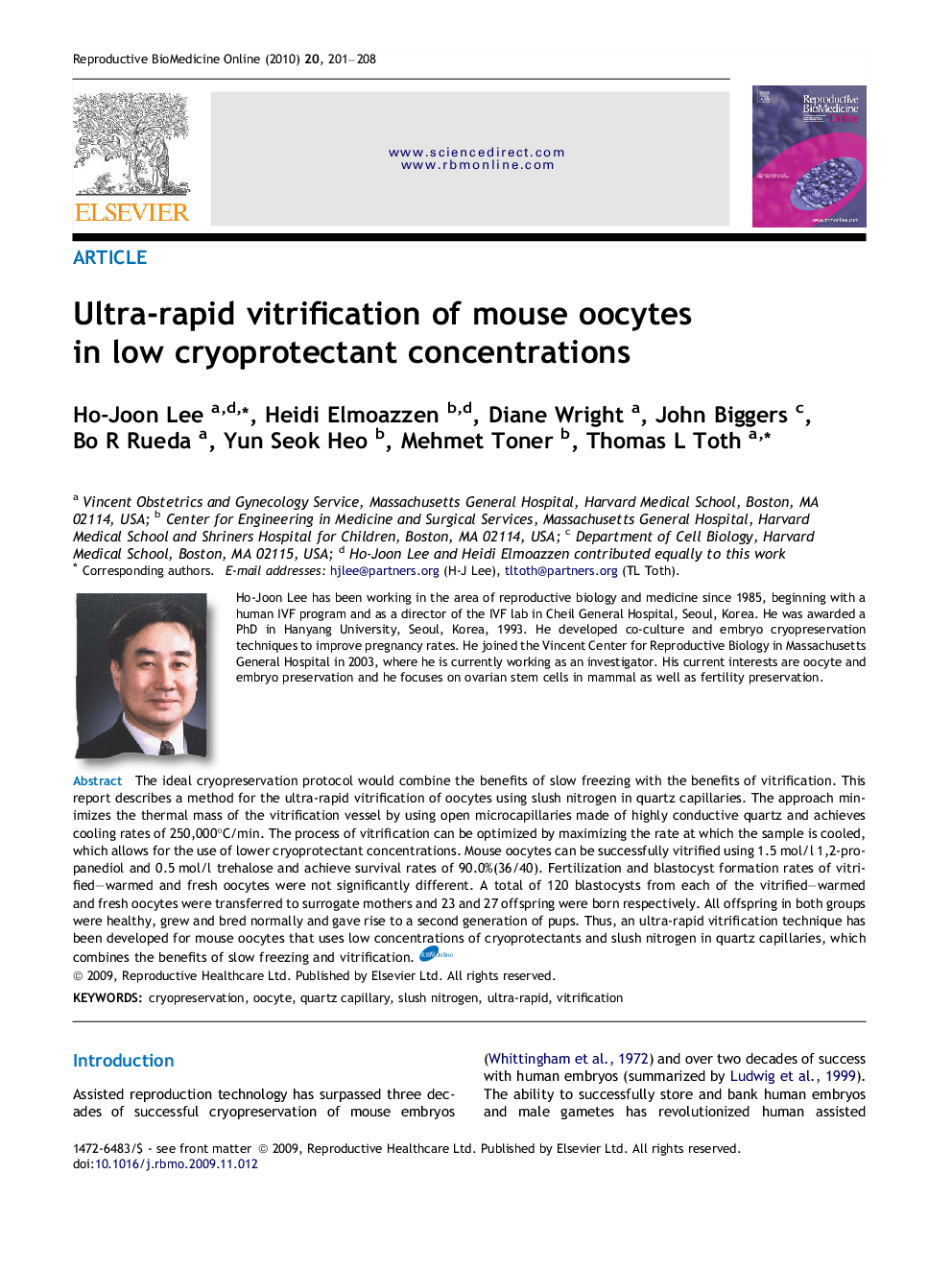| Article ID | Journal | Published Year | Pages | File Type |
|---|---|---|---|---|
| 3971008 | Reproductive BioMedicine Online | 2010 | 8 Pages |
The ideal cryopreservation protocol would combine the benefits of slow freezing with the benefits of vitrification. This report describes a method for the ultra-rapid vitrification of oocytes using slush nitrogen in quartz capillaries. The approach minimizes the thermal mass of the vitrification vessel by using open microcapillaries made of highly conductive quartz and achieves cooling rates of 250,000°C/min. The process of vitrification can be optimized by maximizing the rate at which the sample is cooled, which allows for the use of lower cryoprotectant concentrations. Mouse oocytes can be successfully vitrified using 1.5 mol/l 1,2-propanediol and 0.5 mol/l trehalose and achieve survival rates of 90.0%(36/40). Fertilization and blastocyst formation rates of vitrified–warmed and fresh oocytes were not significantly different. A total of 120 blastocysts from each of the vitrified–warmed and fresh oocytes were transferred to surrogate mothers and 23 and 27 offspring were born respectively. All offspring in both groups were healthy, grew and bred normally and gave rise to a second generation of pups. Thus, an ultra-rapid vitrification technique has been developed for mouse oocytes that uses low concentrations of cryoprotectants and slush nitrogen in quartz capillaries, which combines the benefits of slow freezing and vitrification.
